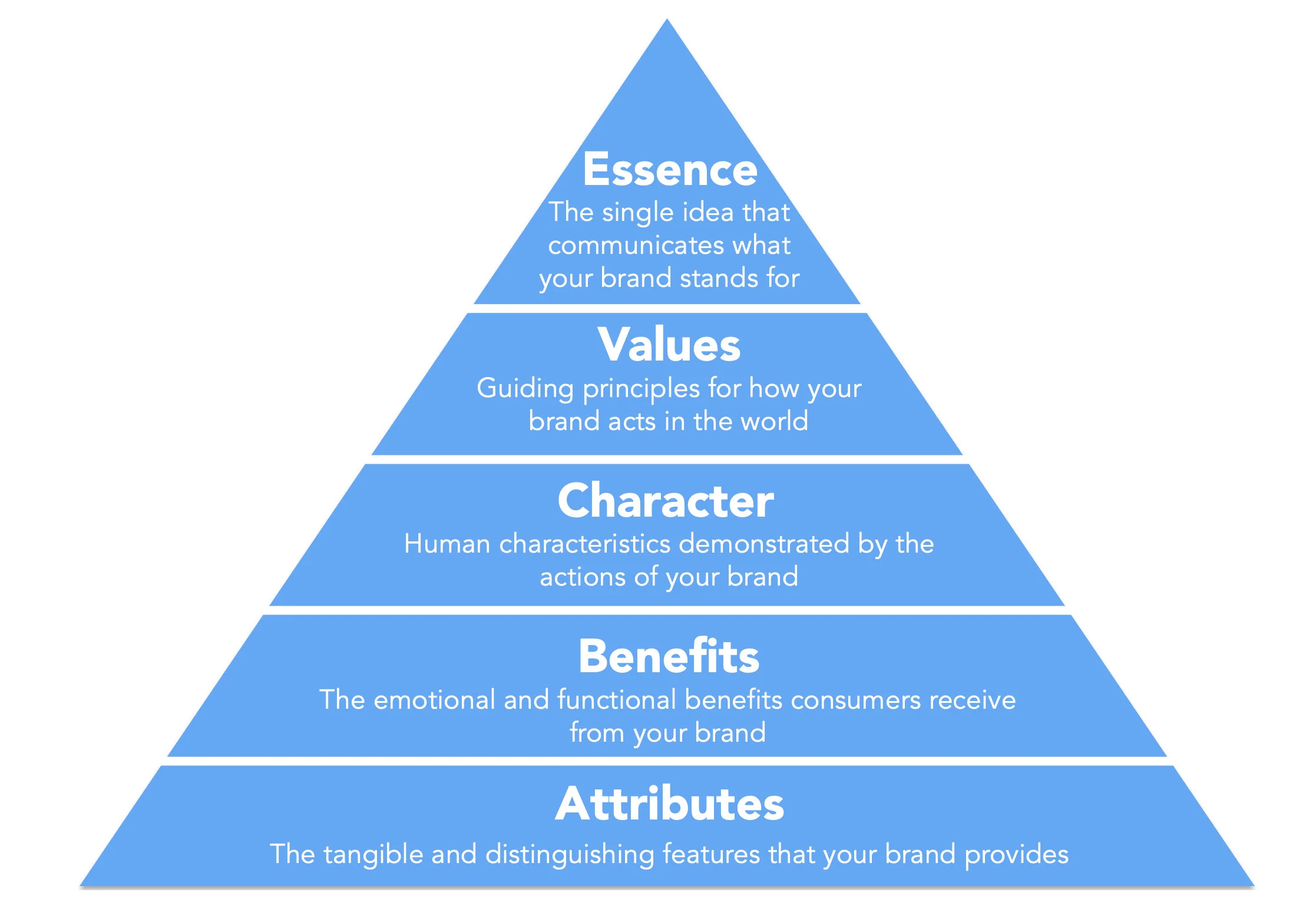Description
The purpose of the Brand Strategy Framework is to clearly and concisely articulate what your brand stands for. A strong brand strategy is critical for making focused, consistent, and effective marketing decisions for your product, service, or organization. There are several different frameworks used by marketers to capture brand strategy. Most have some version of the elements listed in this framework: Essence, Values, Character, Benefits, and Attributes. I am a fan of this pyramid-style framework because it reinforces the overarching importance of a brief articulation of Brand Essence (you can’t fit too many words in the top of a pyramid). It also helps you to ensure that all elements are aligned – from top to bottom.
Questions
The Brand Strategy Framework helps to answer marketing questions like:
What does my brand ultimately stand for?
How does my brand differ from my competitors?
What does my brand provide that benefits people?
Steps
Start at the top, and work down. Your Essence is the DNA of your brand. Ask questions like ‘Why does our brand exist?’ and ‘What do we promise?’ Be single-minded and brief with your answer– 5 words or less.
Your Values are your compass. They represent the principles that will guide your decisions and actions. Ask questions like ‘What do we believe in?’ and ‘What do we stand for’? Capture up to 5.
Your Character is your personality; traits that personify your brand and create mental associations with consumers. Ask yourself, ‘How would my target consumer describe my brand if it were a person?’ Capture up to 5.
Your Benefits are what you provide to your consumers, functionally and emotionally. Ask questions like ‘What positive feelings do consumers receive?’ and ‘What utility do we provide?’ Capture up to 7 in total.
Your Attributes are how you provide your Benefits. They are the features of your offering – the more valuable, distinctive, and provable the better. Ask yourself, ‘What makes our offering better than our competitors?’
Considerations
Do not confuse your Brand Essence with your tagline; your tagline is an expression of your brand.
Ensure your brand strategy is aligned and defensible – do your Attributes support your Benefits?
Be as specific and concise as possible, so your framework can be used to guide challenging marketing decisions
References
Ries, A., Trout, J. “Positioning: The Battle for Your Mind”, McGraw-Hill, 2001

